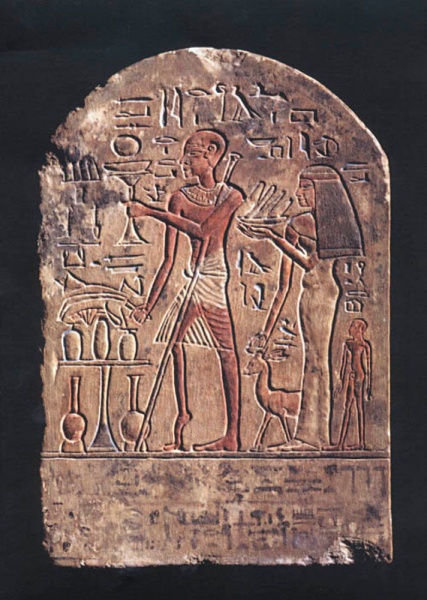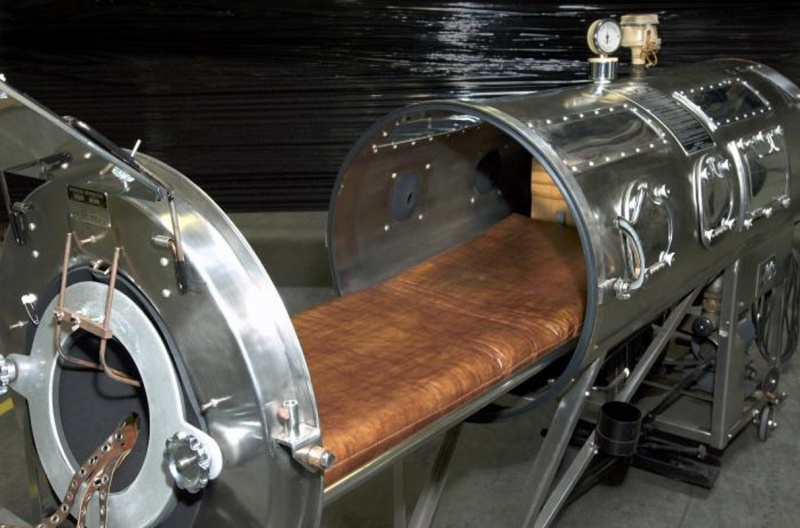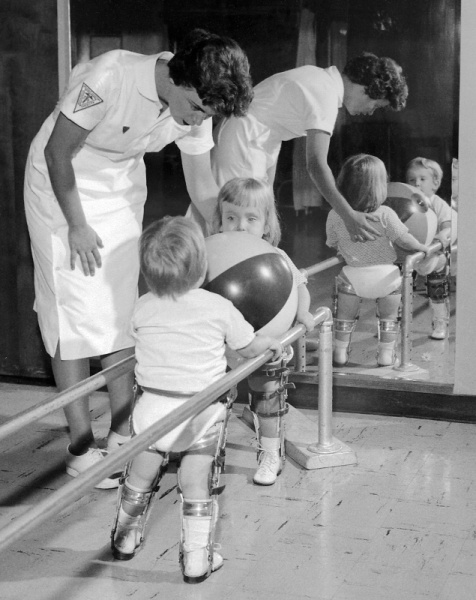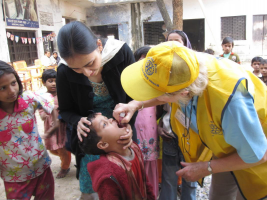The History of Polio
the history of polio, the vaccine and the eradication programme

Return to the Rotary Foundation homepage

Poliomyelitis has existed for thousands of years with depictions of the disease in ancient art. It was first recognised as a condition in 1789 and the virus that causes it in 1908. In the 20th century it became the most worrying childhood disease.
Polio is a serious viral infection that used to be common worldwide including the UK. It may cause muscle weakness and temporary or permanent paralysis which can be life-threatening.
The disease invades the central nervous system destroying or damaging the nerve cells that control muscle movement. Most commonly it affects the legs but may less commonly affect the head, neck and diaphragm.
Polio is spread via person to person through infected faecal matter, by droplet in the air such as coughing or sneezing, or by food/water contamination. It is most infectious 7-10 days before and after symptoms and incubation time is 3-35 days and starts with flu like symptoms. Those who are infected may spread the disease for up to 6 weeks even if no symptoms are present. Approx 1% of infections leads to paralytic pain.

Treatment, there is no cure but relief of symptoms enable a speedy recovery and prevention of complications. Antibiotics are given and long term rehabilitation such as bed rest, occupational therapy, physiotherapy, limb brace, corrective shoes, orthopaedic surgery and portable ventilator maybe required to support breathing. Historically a non- invasive negative pressure ventilator (Iron lung) was used to artificially maintain respiration until the person could breathe normally.
Many people will remember growing up with polio being a common childhood illness, seeing devastating results, and the use of the iron lung.

The first vaccine was developed during the 1950’s and the number of cases dropped dramatically. Before the introduction of the vaccine epidemic would result in up to 7760 cases of paralytic polio in the UK each year with up to 750 deaths.
Approx 25-50% of survivors will suffer from post- polio syndrome in the affected muscle and can present anything from 10-40 years later, but it is not infectious.
Some survivors have formed a support/survivors group.
It took around 40 years for USA to become polio free in 1994, Western Pacific in 2000, Europe in 2002, SE Asia in 2014, and most of Africa and the middle east. Polio is still endemic in three countries: Afghanistan, Pakistan and Nigeria.
Related pages...

Purple 4 Polio Crocuses for 2024
more Continuing the success of our crocus planting over the last few years, find out how your Rotary club or community group can help paint District 1090 in the Thames Valley even more Purple4Polio in the Spring of 2024.

Polio Eradication - useful resources and links
more District resources, links to RIBI and RI pages and to the World Polio Eradication Initiative pages

Polio Ambassadors across Britain and Ireland
more Rotary's polio campaign is supported by many famous faces

Crocuses in Bloom around the District
more All the hard work in October and November was worth it - the Thames Valley turns purple

An opportunity to recognise our Polio Champions
more deadline for nominations in 20th August 2021
back to page above this...

End Polio Now
back Rotary's remarkable commitment. Working with an incredible network of people, we really are so close to eradicating polio.